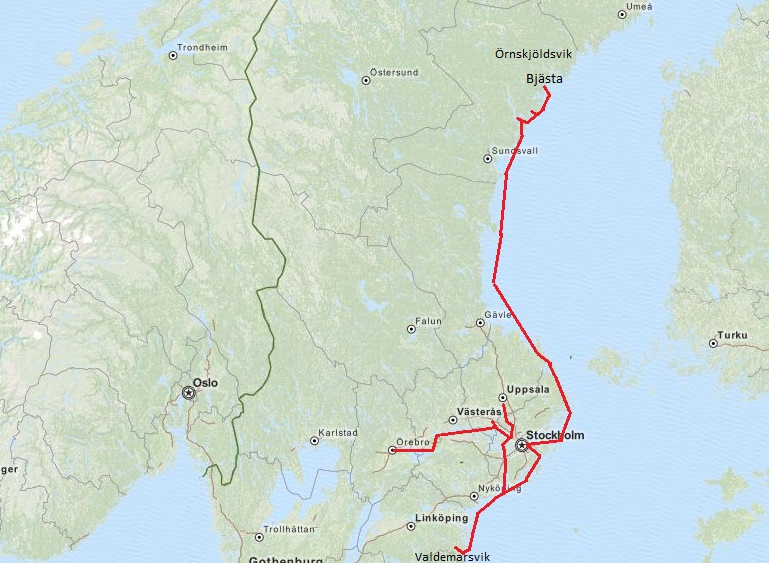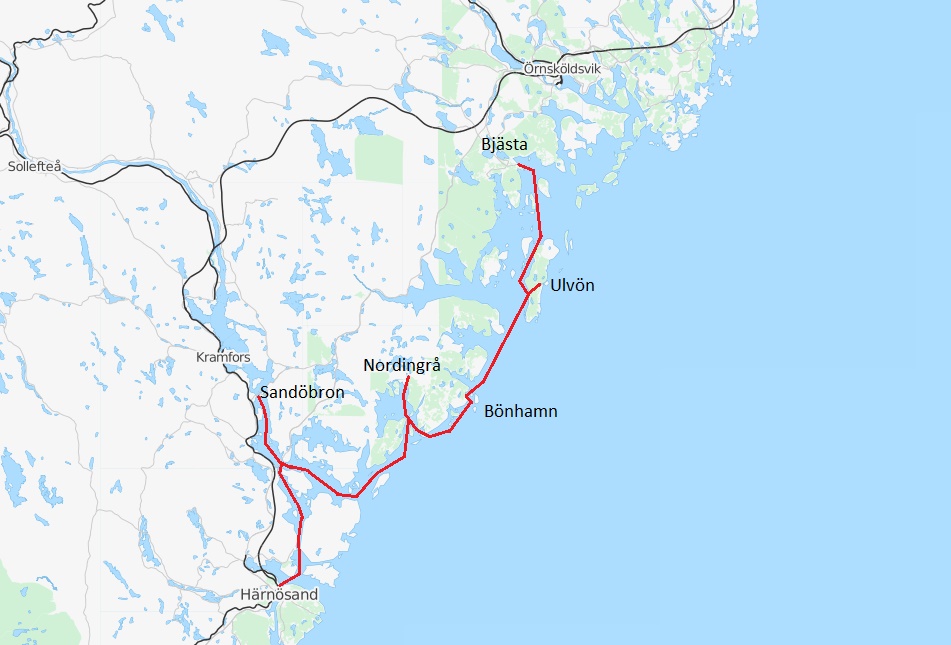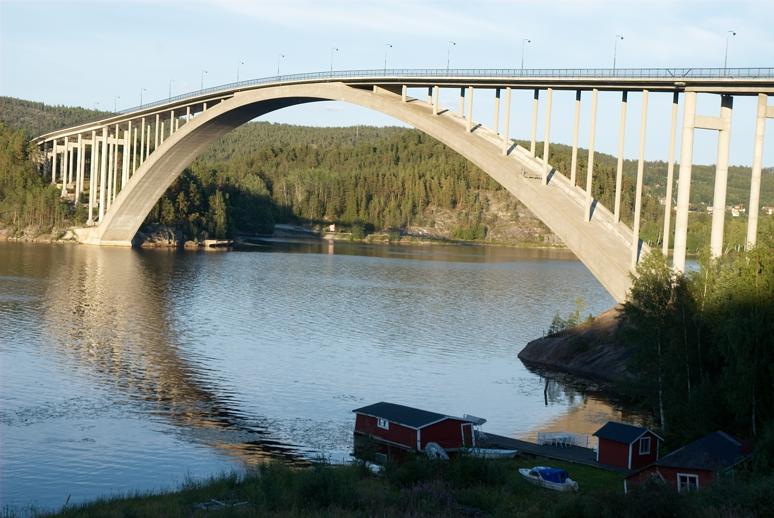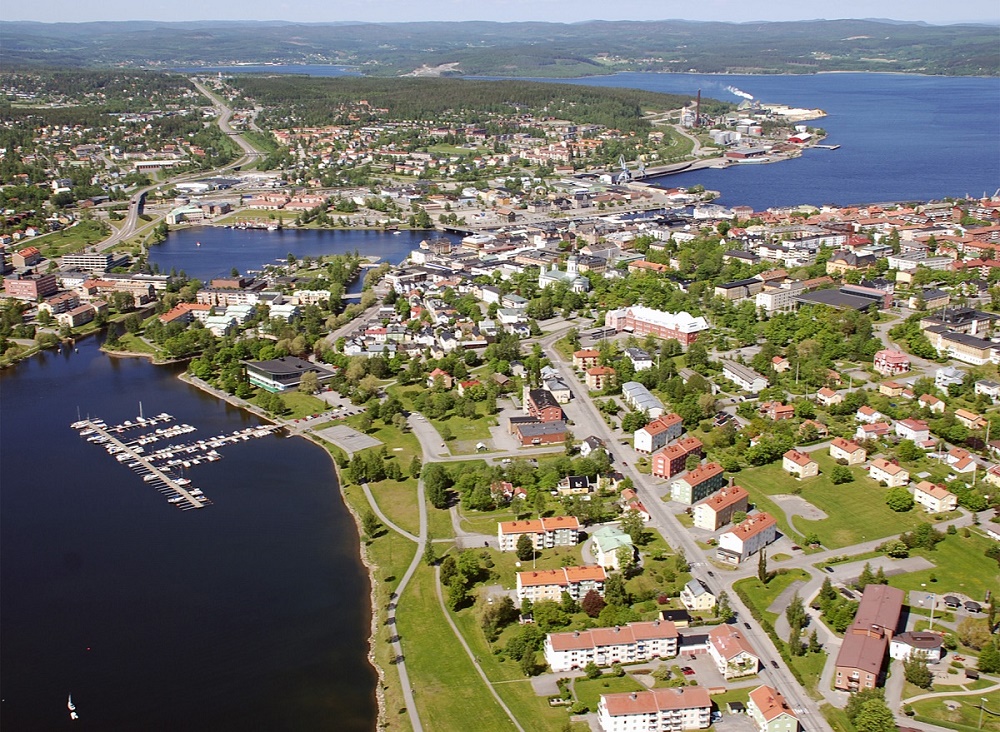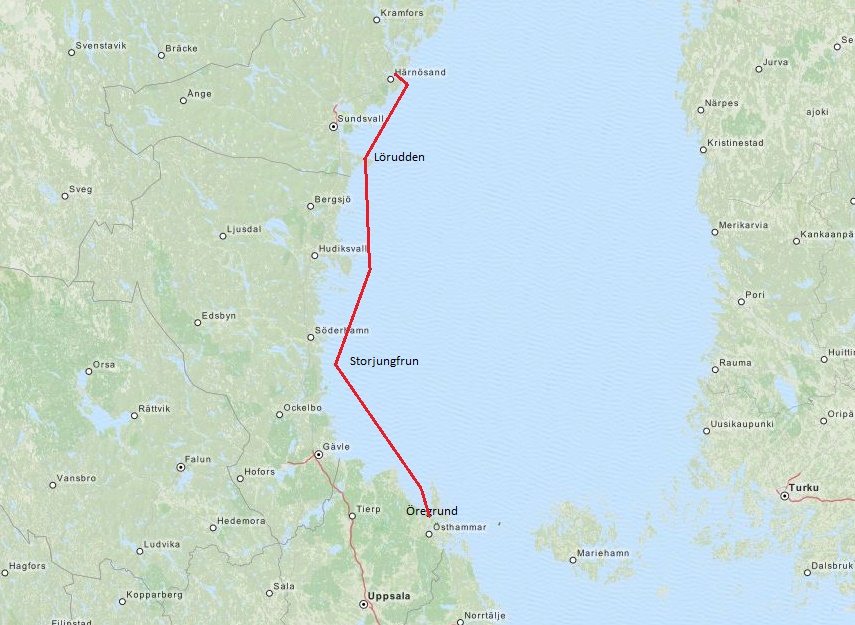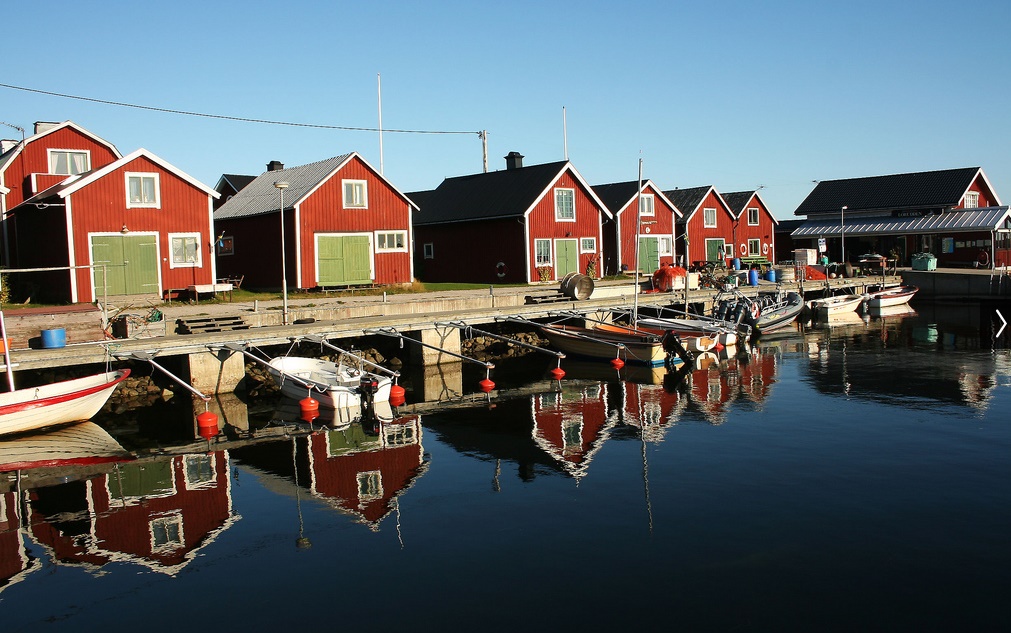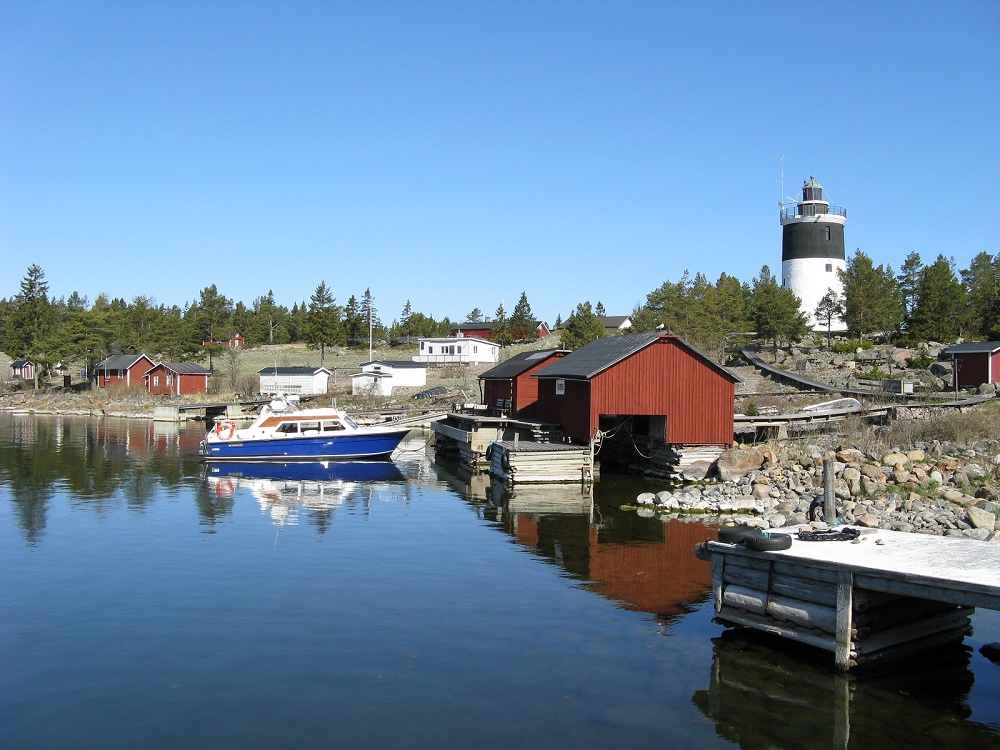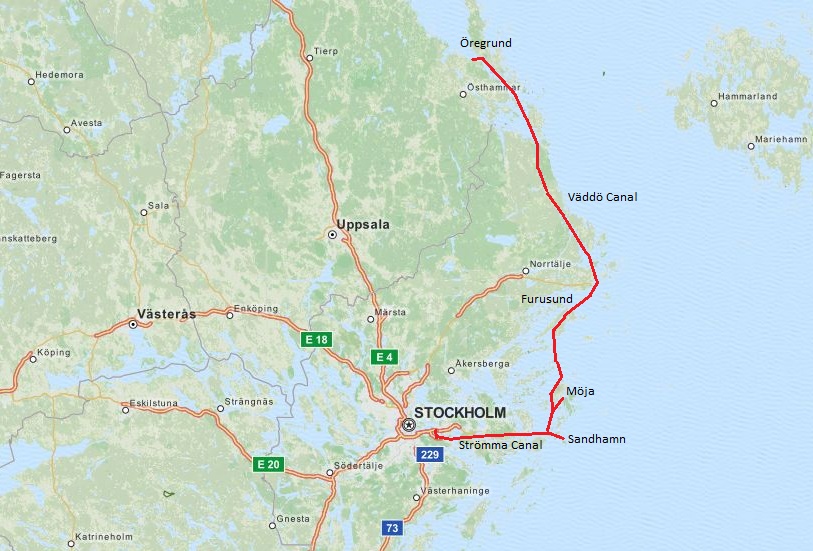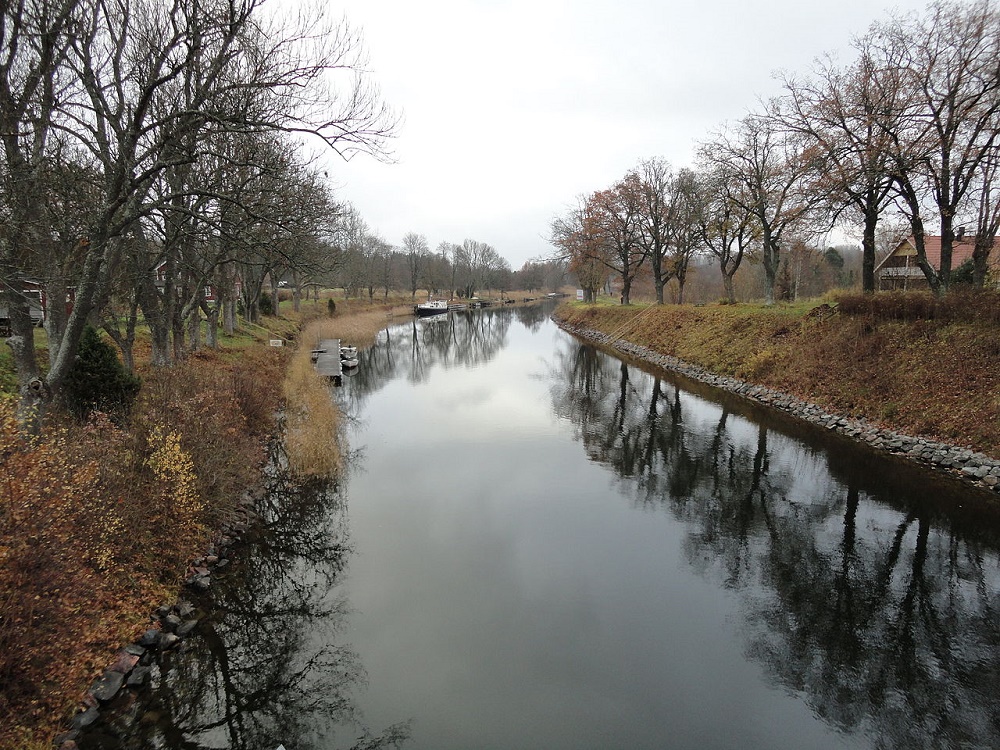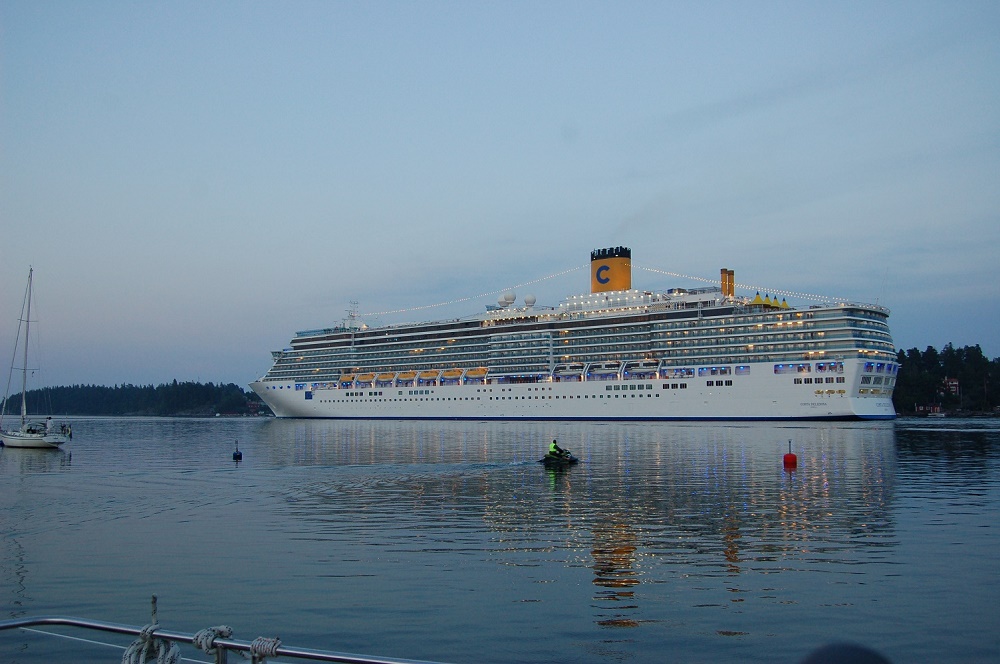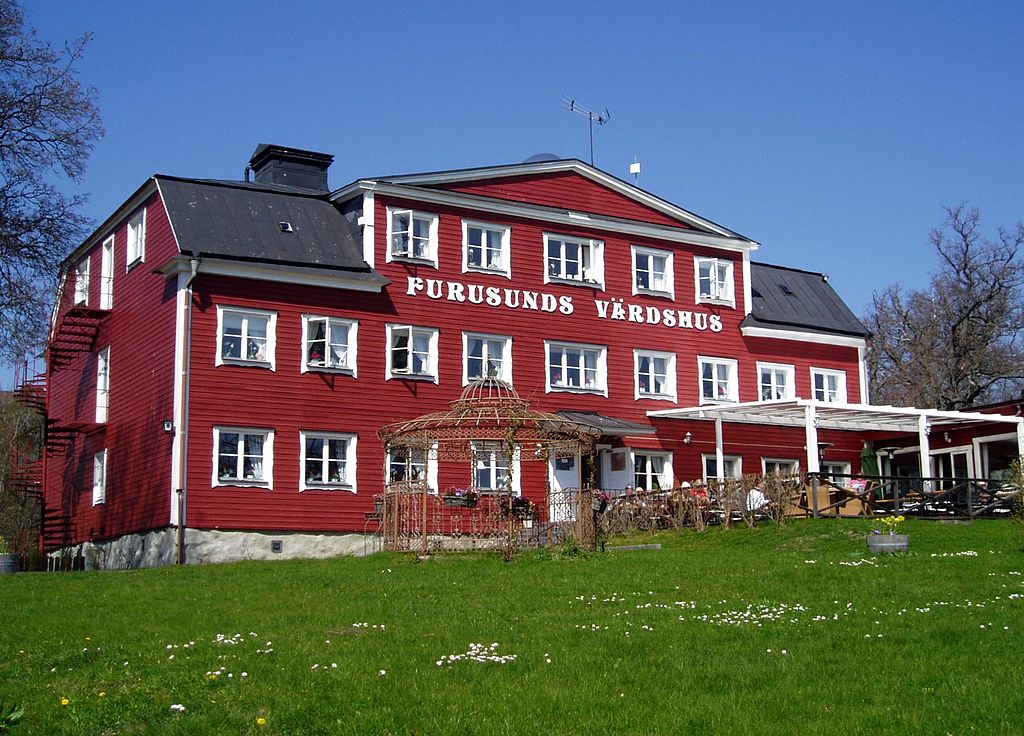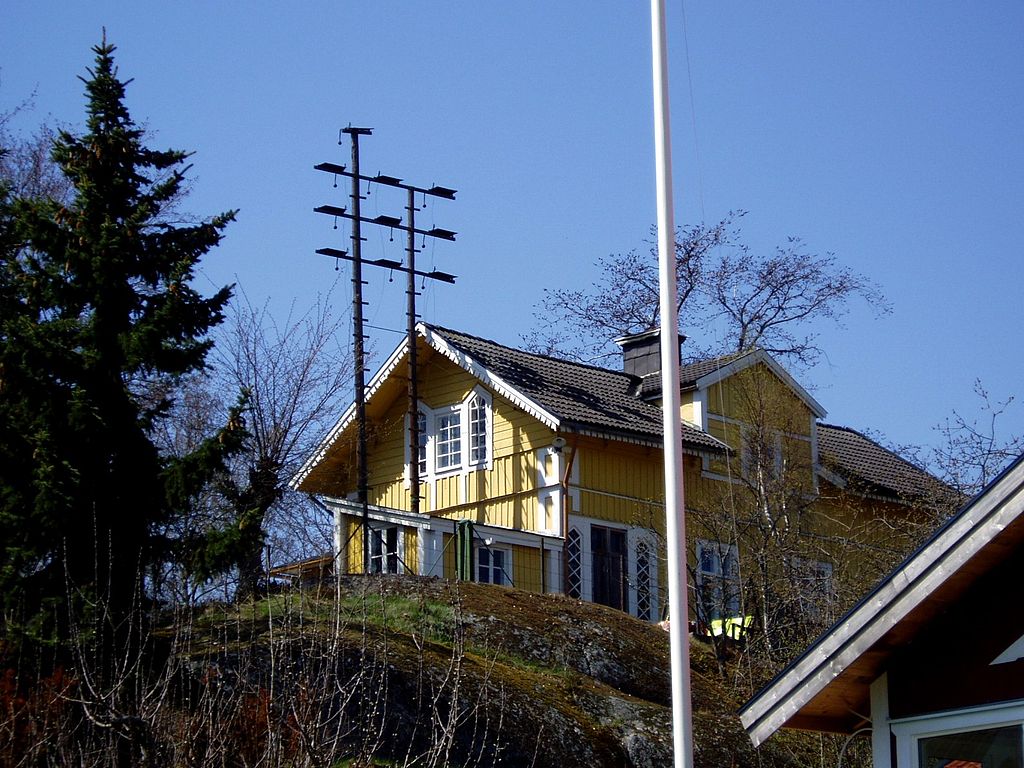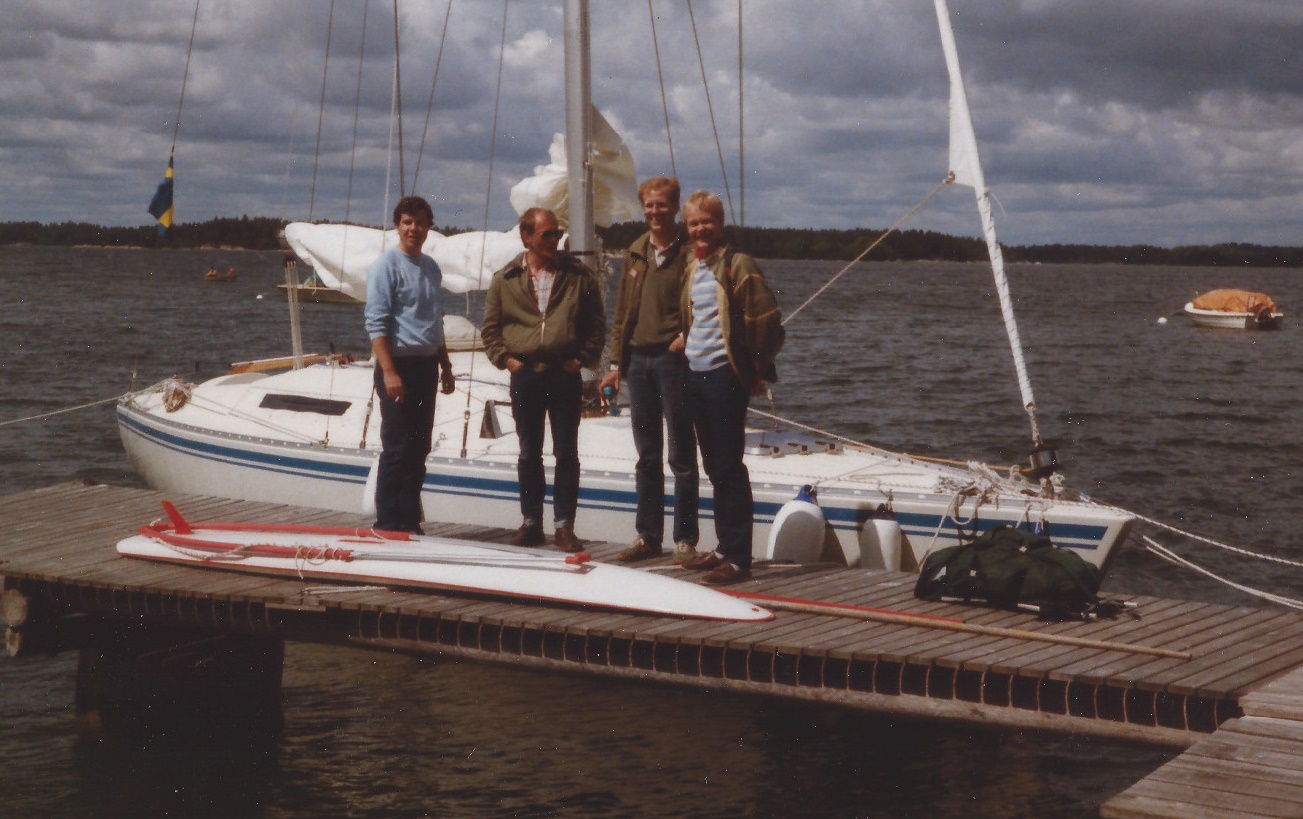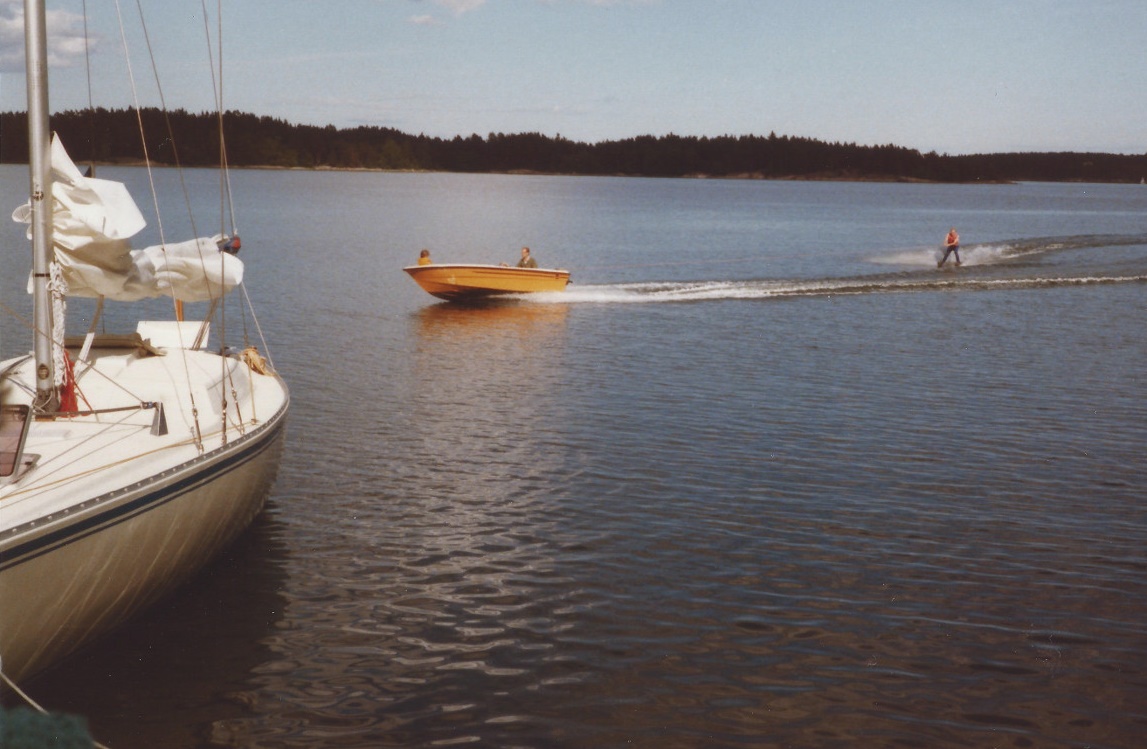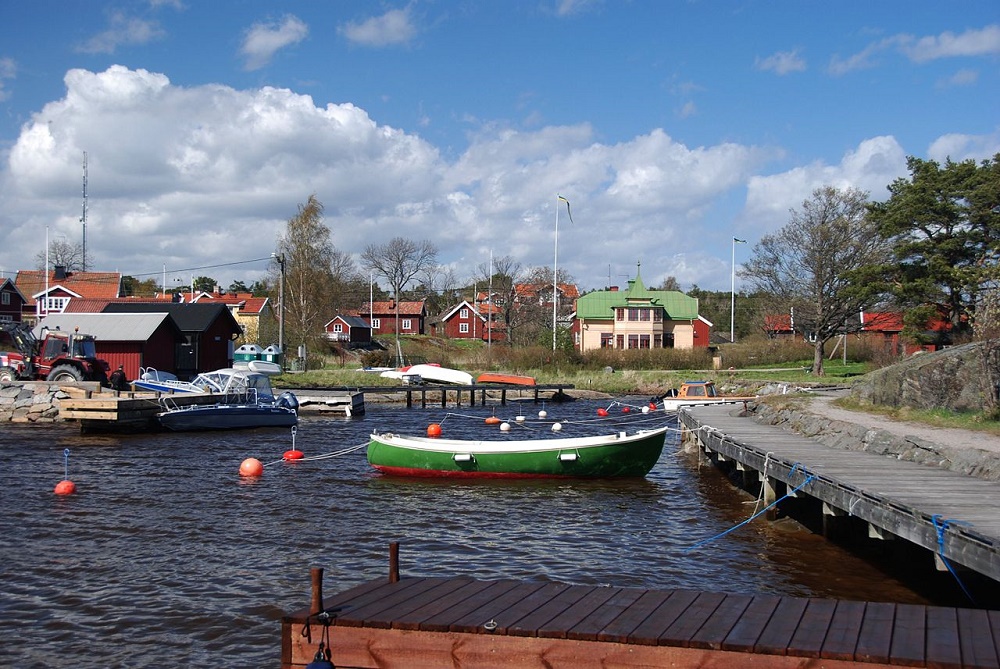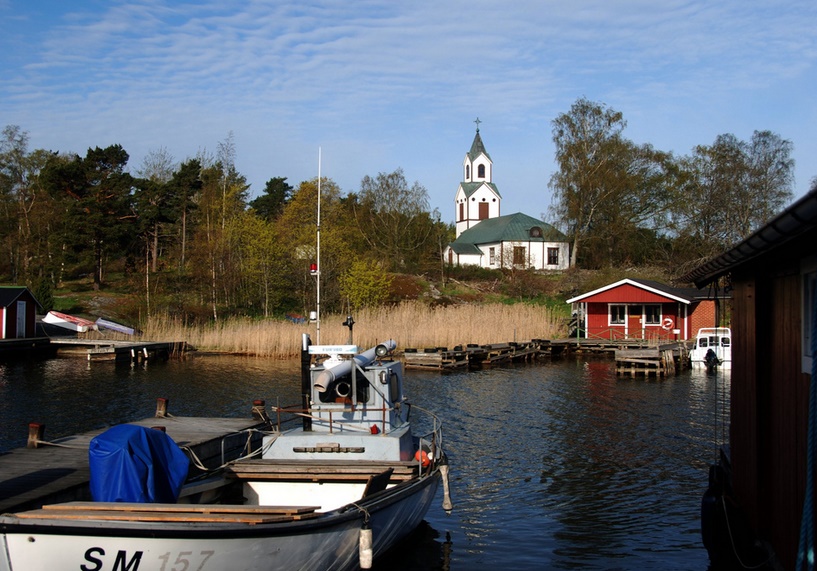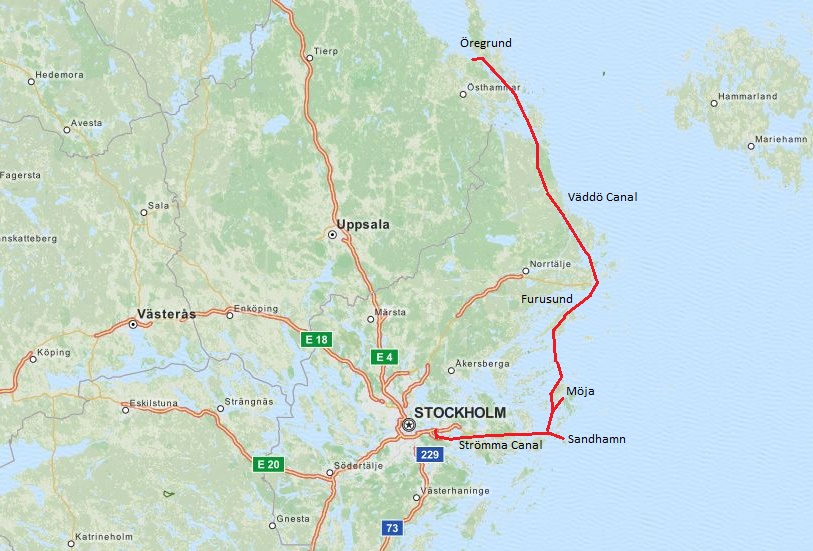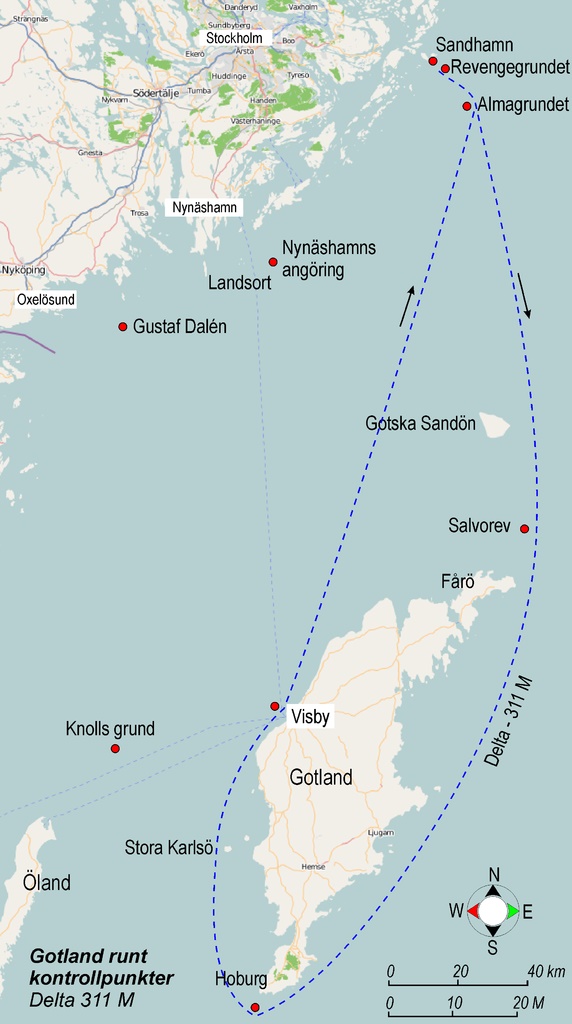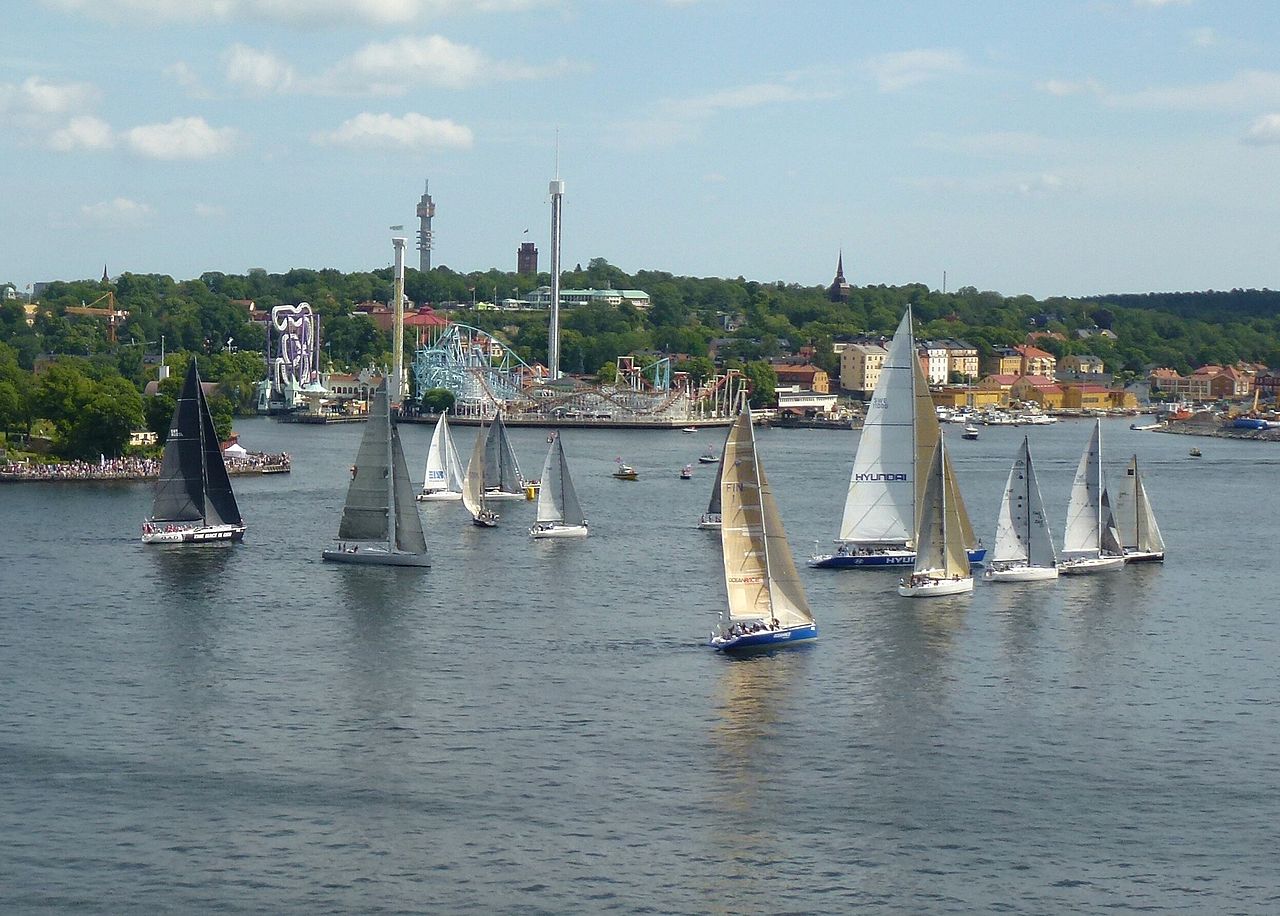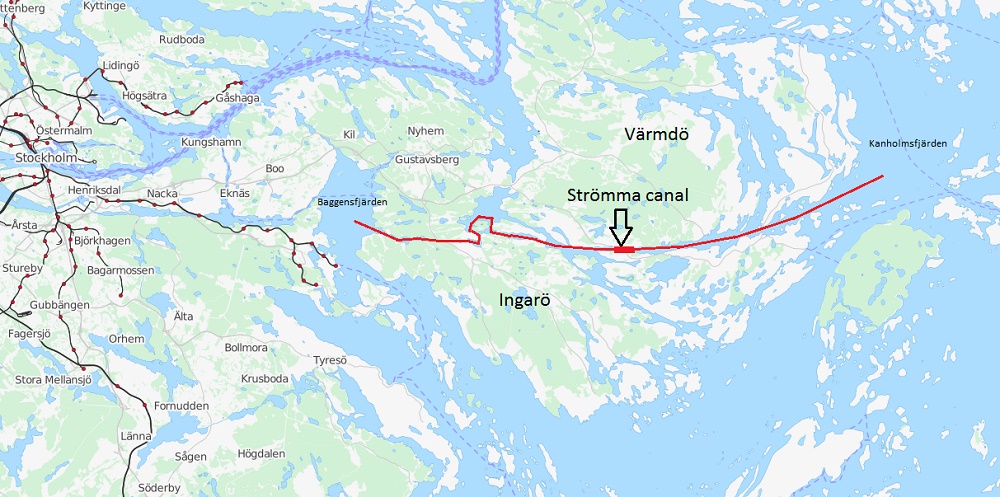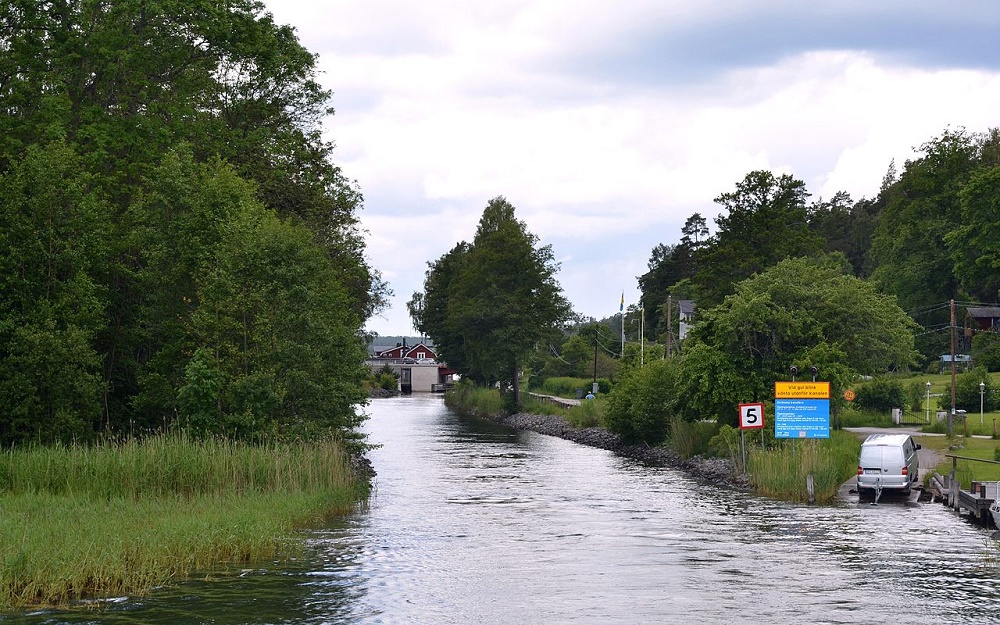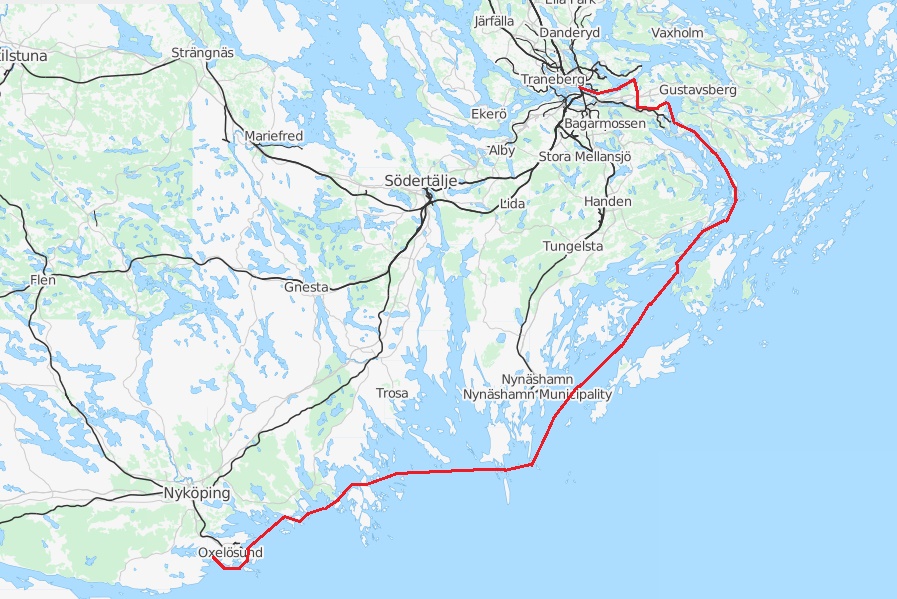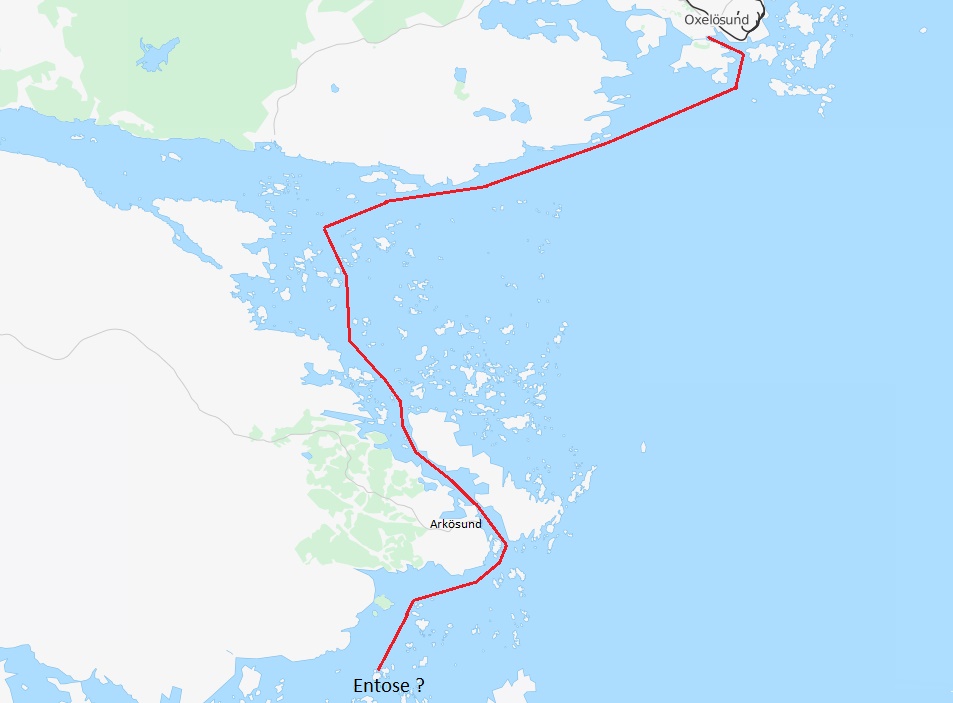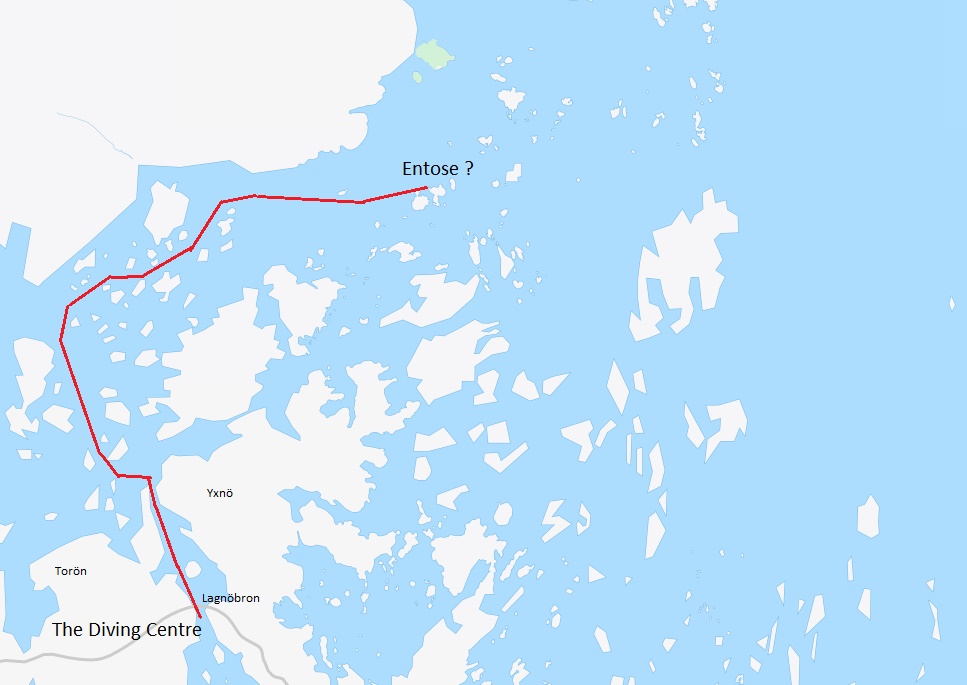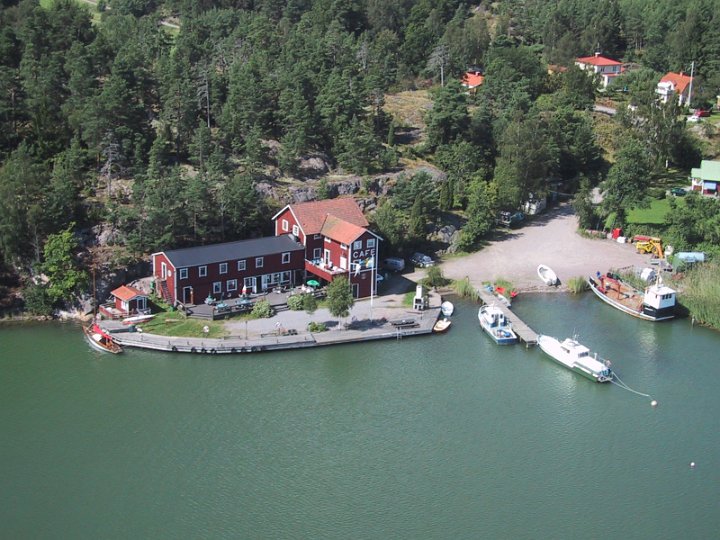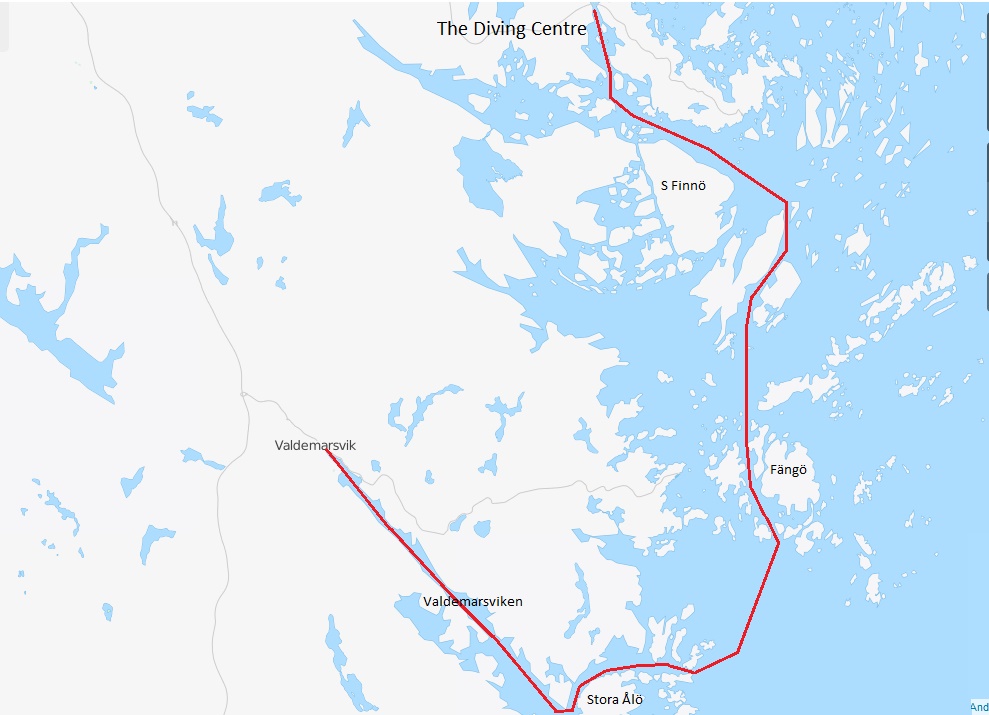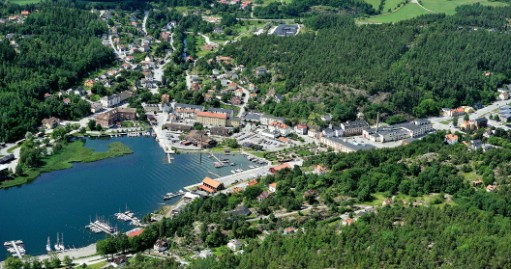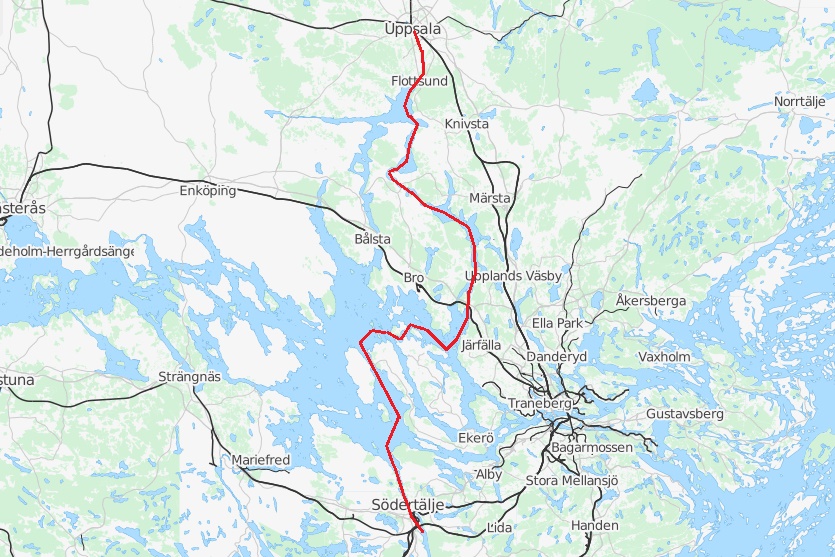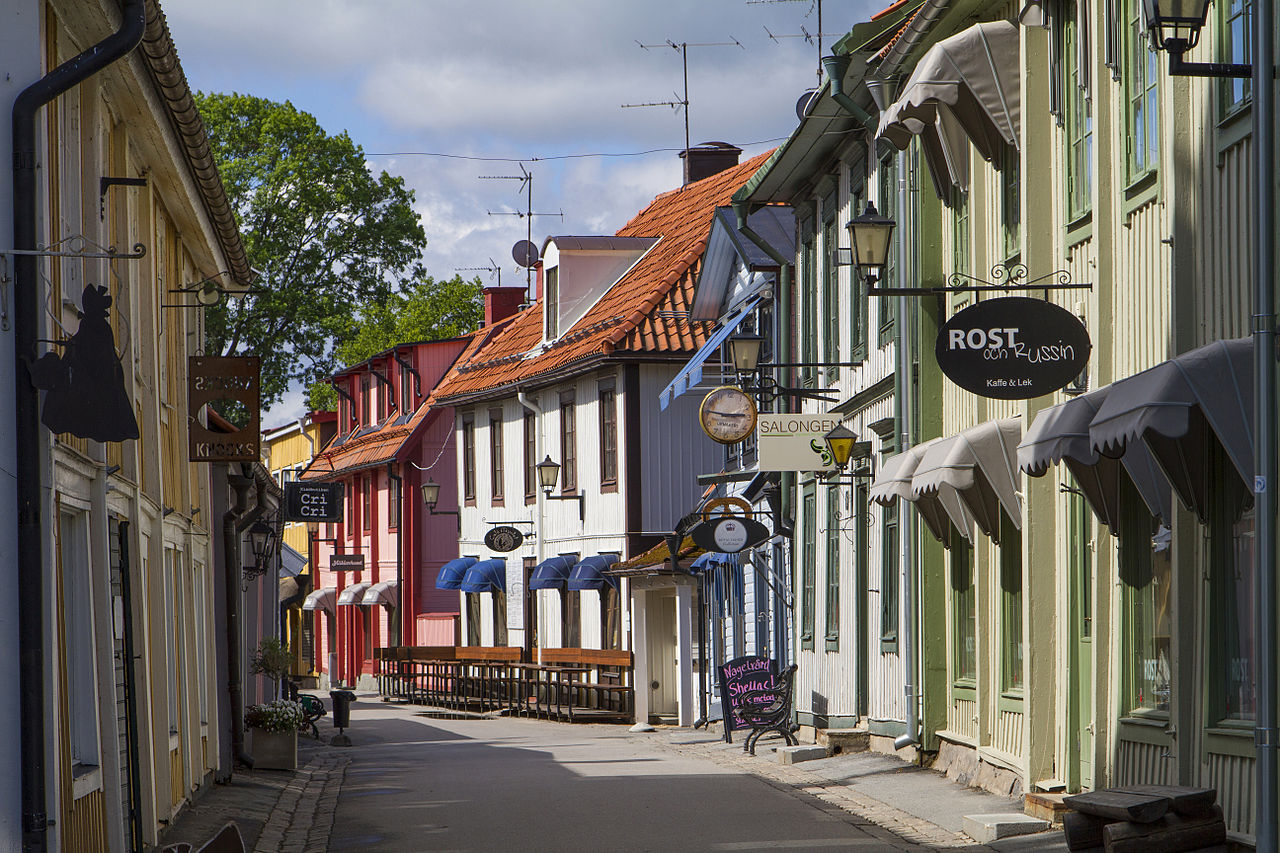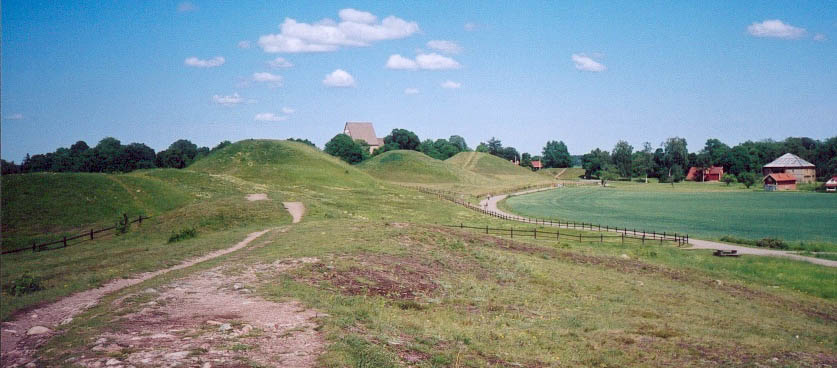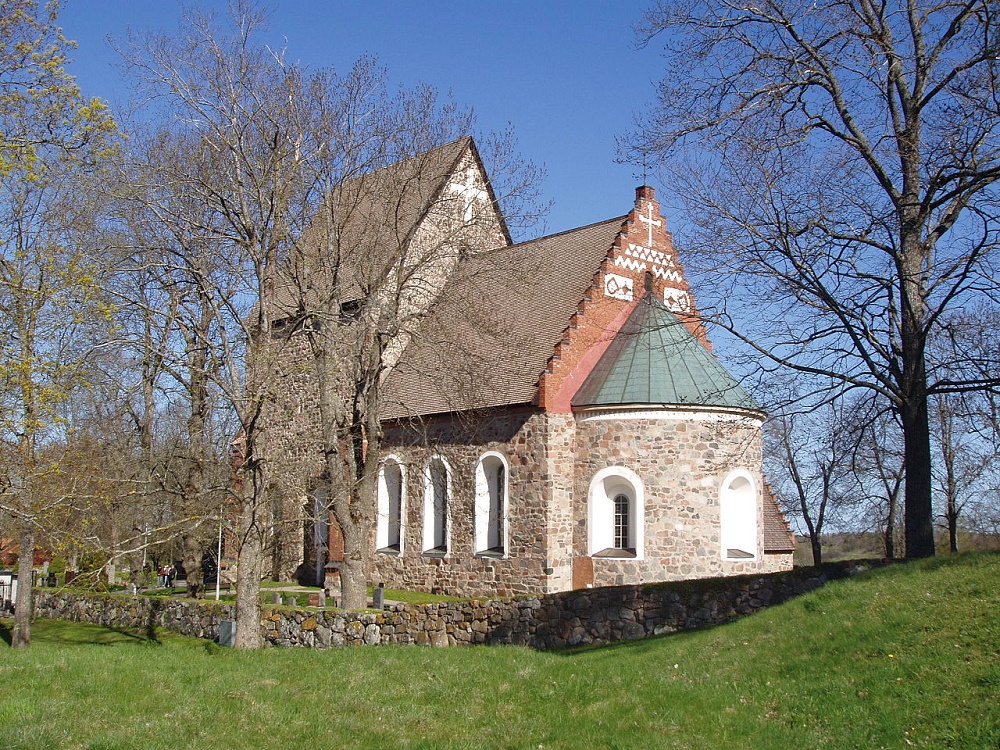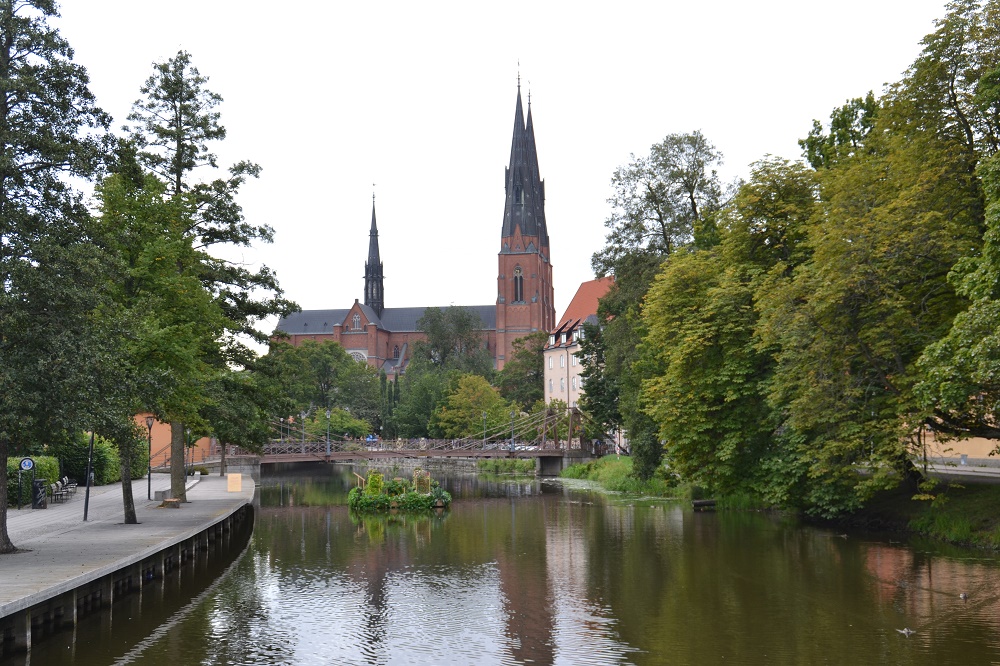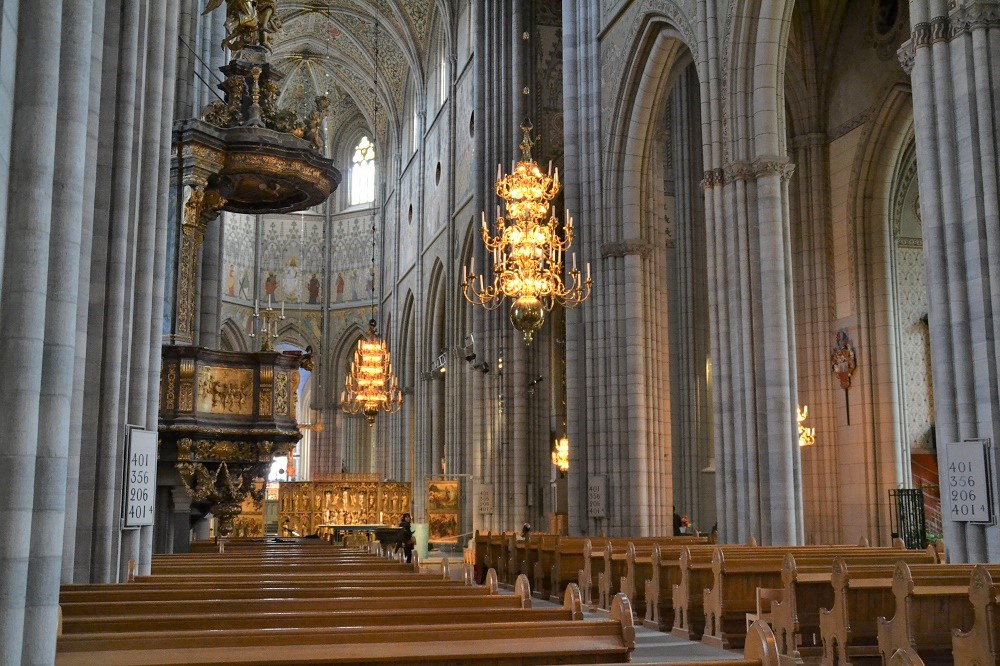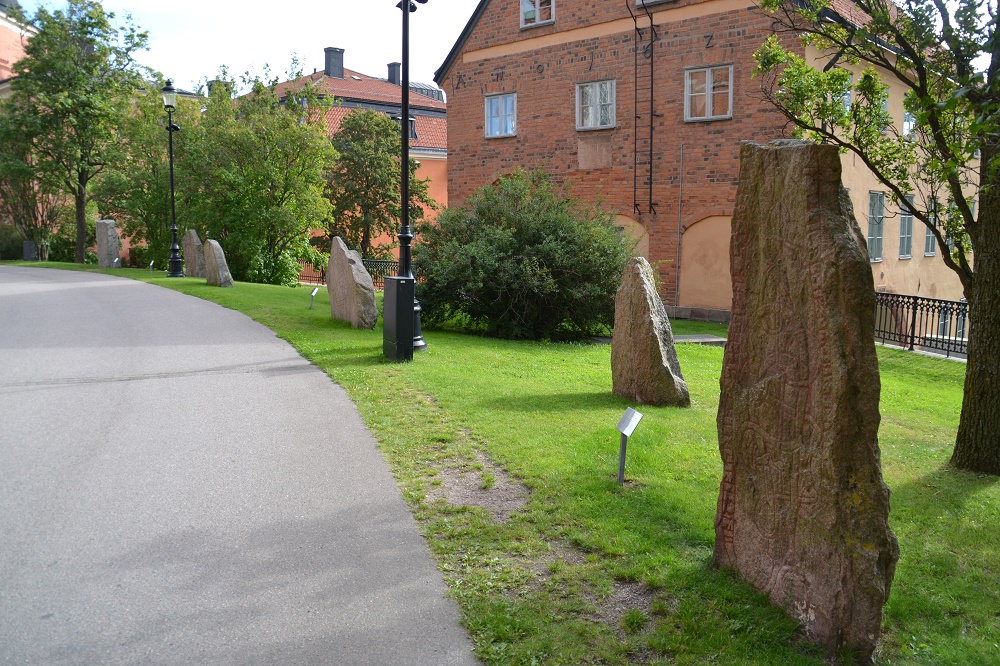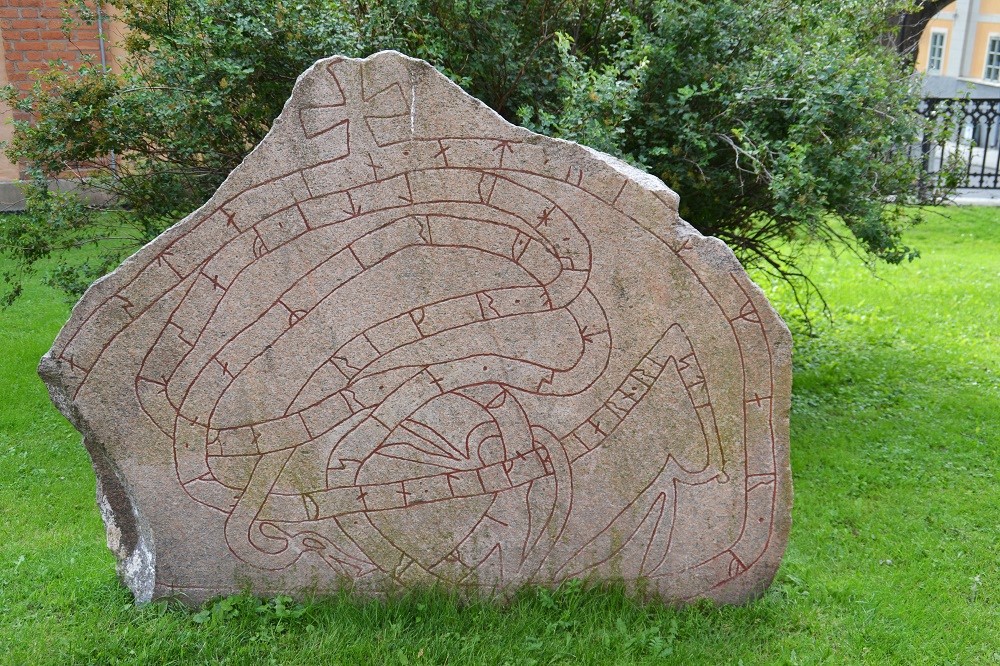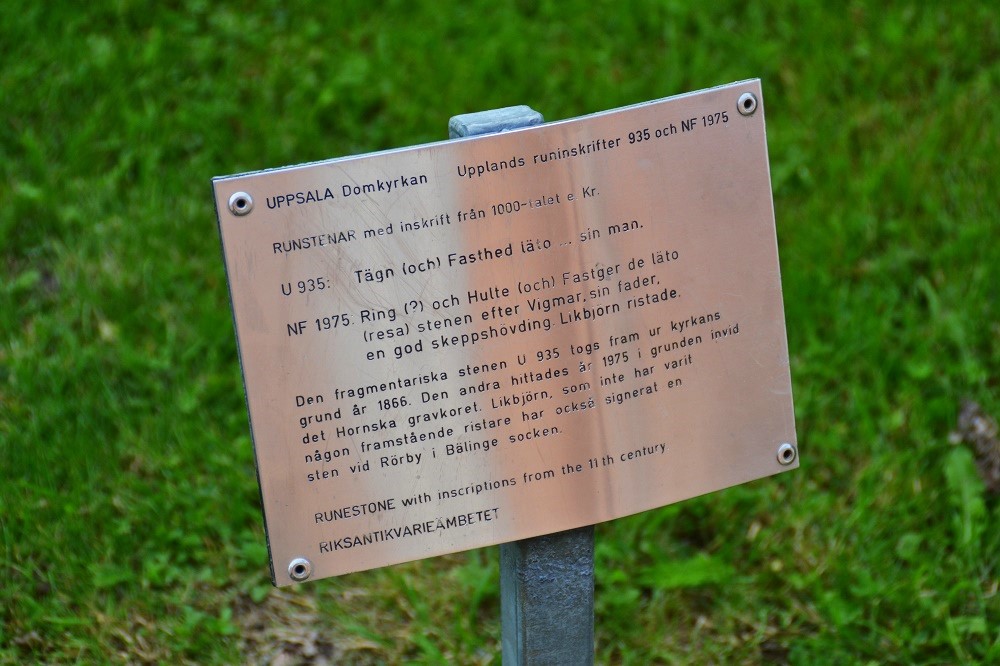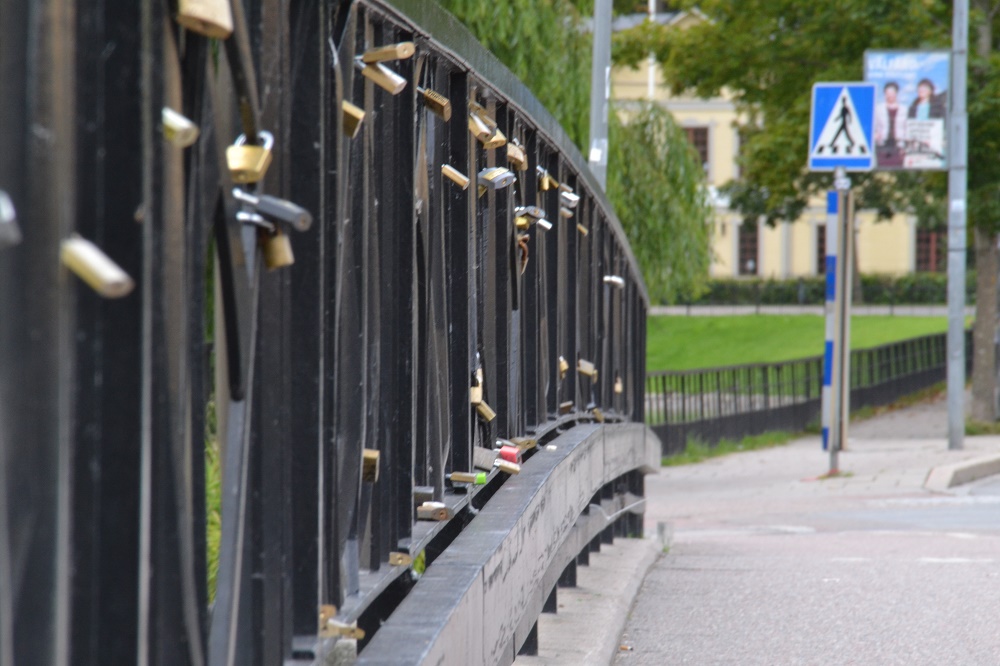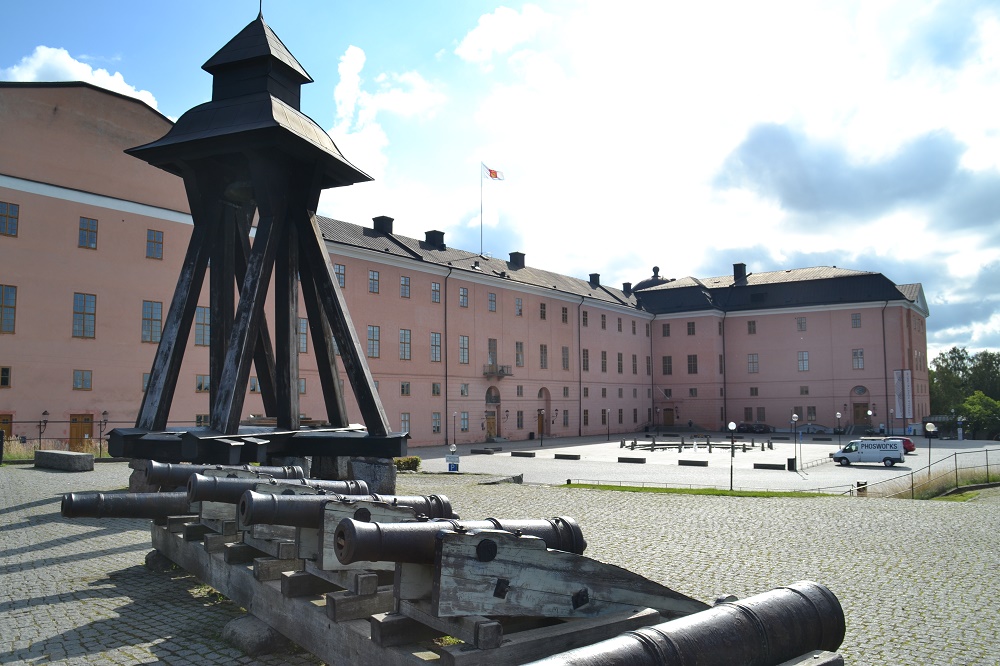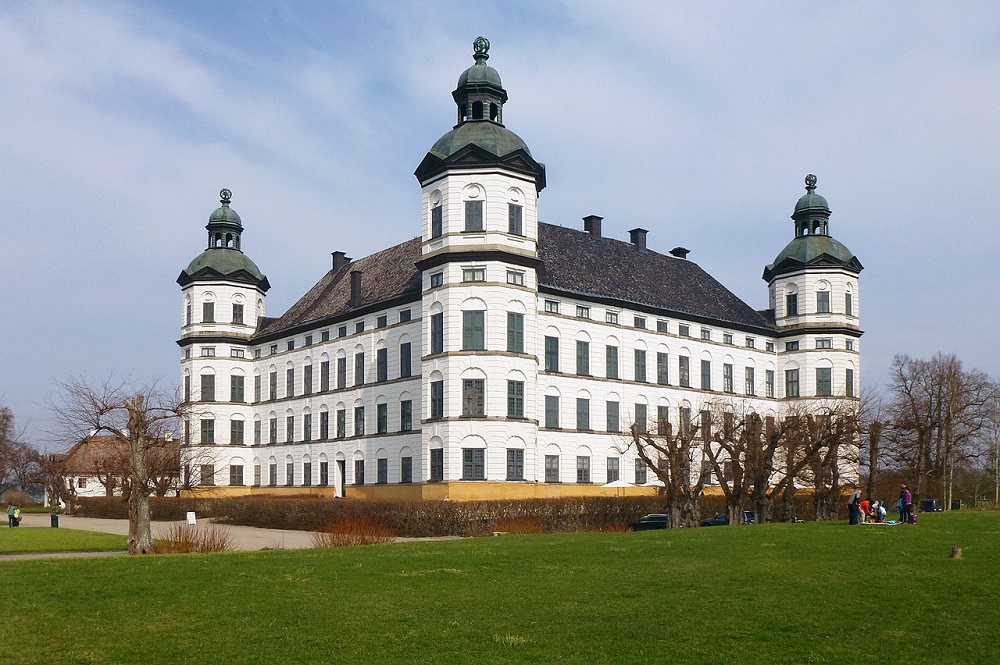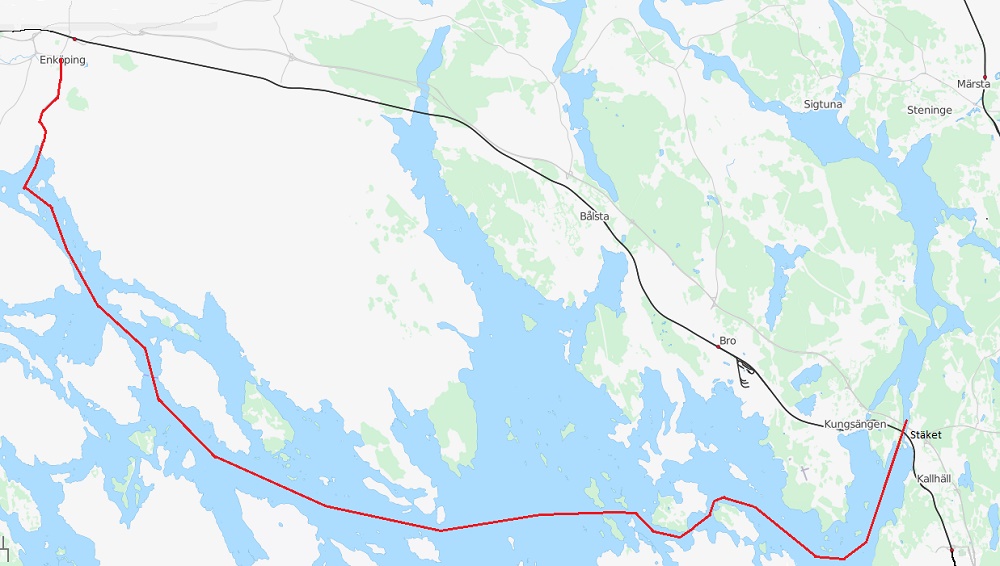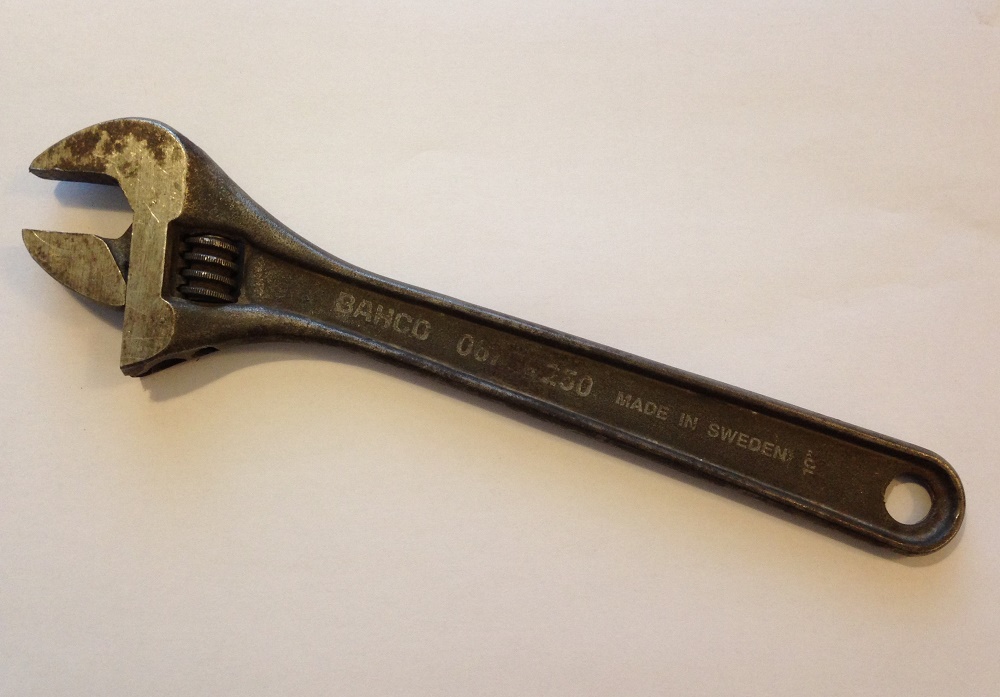
 1984
1984


The Gulf of Botnia with S/Y Lynx
Bjästa, Stockholm, Valdemarsvik and Uppsala by Johan Kjellander 2014 På svenska
1983 I sold my trawler Etoile, so now it was time for Lynx, a Guyline 125. The hull was built in Bjästa, way up north (Lat 63.5N) in the Bay of Botnia, far from my home waters. I spent a few weeks in Bjästa with the minimal preparations needed for launching and then sailed her south along Höga Kusten, the Botnian Sea, Sea of Åland, down to Valdemarsvik in the Baltic and finally back to Örebro with a side trip to Uppsala. During this trip she was totally empty inside and life was very primitive.
Unfortunately I have almost no pictures of my own from this time. I have my handwritten log book from 1984 and with tools like OpenStreetMap, Microsoft Paint and Notepad++ I have created the map images and the text below. The photographs are copied from various places on the Internet. See our About-page for copyright issues.
Höga Kusten
Höga Kusten is the part of the Swedish east coast between Örnskjöldsvik in the north and Härnösand in the south. It has its name from the high and steep cliffs created by 800 meters of land rising since the last glacial period. Höga Kusten is beautiful, wild country with lots of natural anchorages but few coastal villages with harbour facilities. It is also a UNESCO World Heritage Site since year 2000. First night I stopped at Ulvön, the centre of Swedish traditional fermented herring production. I can also recommend Bönhamn, an old fishing village and Nordingrå with Mannaminne, an interesting cultural museum.
Sandö Bridge, photo by Lundberg, Bengt A, © CC-BY 2.5
The river of Ångermanälven has its outlet in the south part of Höga Kusten. It's a big river that reaches far into the country (463 km according to Wikipedia). In the old times it was used for log driving but today its economical importance is hydroelectric power generation. 12 NM upstream, Sandö Bridge crosses the river. It was once the longest of its kind but has a tragic story. During its construction 1939 a part of the bridge fell down and 18 people died.
Press photo of Härnösand from above, © Härnösand kommun
I sailed up to the bridge but the current made it impossible to continue in the weak wind, so I turned and headed south for Härnösand. In Härnösand I learned that the local boat club (HSS, founded 1858) had a place of their own on Lustholmen just a couple of NM north. I like visiting boat clubs, so the next day I moved to Lustholmen. In the after noon boats began to arrive and later the small harbour was almost full. I met a lot of nice people and had a great time. Many people of course were interested in my new Guyline which was a very unusual boat at that time.
Botnian Sea
It is not easy to keep track of the names of the different waters around here. Gulf of Botnia is the common name of all waters north of Åland. Gulf of Botnia is sometimes considered to be a part of the Baltic Sea but some people believe the Baltic ends south of Åland. Höga kusten belongs to Gulf of Botnia. The water north of Höga kusten is the Botnian Bay. The water south of Höga kusten is called the Botnian Sea which subequently also is a part of Gulf of Botnia ! Gulf of Botnia, Botnian Bay, Botnian Sea, not easy to remember...
Lörudden, photo by Darkangels, © CC-BY-NC-ND 2.0
From Härnösand I continued to Lörudden, a very beautiful old fishing village with a very good fish restaurant. All buildings in the village were destroyed by the Russians 1721 except for the chapel built 1620 which you can still visit. This part of the coast is less protected than north of Härnösand. I do recommend good planning and preparations, specially if you are south bound. The prevailing wind is Southwest.
Press photo of Stora Jungfrun, © Söderhamns kommun
75 NM south of Lörudden lies Storjungfrun, a small island, only three times one kilometer. Storjungfrun has a small well protected harbour and a lighthouse that was coal fired when it was taken into duty 1838. Here I met a family with a Trawler (Trålaren), the same type of motorsailer I built and sailed from 1979 to 1983. Of course we had a lot to talk about.
Storjungfrun is a good starting point for the last trip south before you leave the Gulf of Botnia. The distance to Öregrund is 60 NM and once there you are in well protected waters again.
From Öregrund to Stockholm
The archipelago north of Stockholm reaches all the way along the Sea of Åland up to Öregrund. Heading south I chose the waterway inside Gräsö, Singö, Väddö and Björkö which protect you from Sea of Åland.
Väddö Canal, photo by Svens Welt, © CC-BY-SA 3.0
The narrow waterway between Väddö and the mainland was once a natural passage but land rising made it shallow and from the 16:th century it was often too shallow to be used. From 1750 it was totally blocked and plans to dig a canal started to form. After 12 years of digging by 300 soldiers the 15 km long canal opened 1835. Today 22.000 boats use the canal every year. You can learn all about it in Väddö Canal Museum in Älmsta.
South of Väddö the coastline turns west and here you find Furusund where the route between Stockholm and Finland crosses the north/south-bound coastal waterway. Furusund is a small island but also the name of the narrow passageway between Furusund and Yxlan. There is a small marina in Furusund and if you stay there you will soon witness cruising ships pass by on their way to Stockholm or Finland. The traffic is intense and you have to be careful to stay out of the way of these big ships.
Photo by Udo Schröter, © CC-BY-SA 3.0
Furusund was once a popular place for rich people to spend their summer holidays. August Strindberg was here and used some of the scenes in his writing. Childrens book writer Astrid Lindgren is another. Evert Taube wrote Vals i Furusund, a well known song where the text goes: I remember a moment in Furusund, we came sailing from Öregrund, in the blue of Sea of Åland. That text has an extra dimension if you are in Furusund and arrived by sail from Öregrund, just like I did 1984.
With the strategic location of Furusund it has always been important to be able to send messages to Stockholm. One obvious reason was to warn the capital city of enemy ships approaching from east. In 1837 an optical telegraph station was built in Furusund. It had 10 black rectangular plates that could be turned horizontal or vertical, representing a state of one or zero. Another telegraph station as far as 14 km away could read the state of the plates through binoculars. With this early binary code any number between zero and 1024 could be transmitted. The rest was just a matter of coding, each number represented a word or letter. I wonder if one of the codes translated to something like: The russians are coming ! Today this is the only optical telegraph still existing in Sweden.
It was now the end of June and that means midsummer, which is one of the most celebrated holidays in Sweden, specially on the countryside. Midsummers eve is a big party evening with traditional food, maypole, music and dancing. A good friend of my brother had his summer house on Yxlan opposite to Furusund so I joined them for the celebration and we had a great time with water skiing and other fun.
Möja Loka, photo by Dick Rochester, © CC-BY-SA 2.0
Möja Kyrkviken, photo by Let Ideas Compete, © CC-BY-NC-ND 2.0
There are so many interesting places to go in the Stockholm Archipelago. So many beautiful islands with small fishing harbours, beautiful nature and interesting history. One place I had never been before was Möja. Möja is a very popular place during the summer, specially during the traditional mid summer celebrations last week in June.
Sandhamn, photo by Arild Vågen, © CC-BY-SA 3.0 Approved by Swedish Defence ID:FMTM 10 830:10771
Another interesting place in the outer archipelago is Sandhamn. Here the Royal Swedish Yacht Club, KSS founded 1830, has its yachting centre and also run the marina. There are not many boats here in February, see above, but during the summer this is a very busy place.
Round Gotland Race, OpenStreetMap/Lidingo © CC-BY-SA 3.0
Each summer since 1937 KSSS arranges one of the worlds biggest offshore races for sail boats, the Round Gotland Race. 300 boats compete in different classes with a shortest track of 311 NM.
Round Gotland Race, photo by Holger.Ellgaard, © CC-BY-SA 3.0
For many years this race started in Sandhamn but for commercial reasons the start was moved recently to central Stockholm. The race itself started 1937 as the result of an initiative from former Olympic sailor Sven G. Salen (bronze medal in R6 1936). Sven Salen participated in many international sail races. One was the Coppa Tireno race outside Genoa in Italy 1927. In this race he was the first one in the world to utilize a possibility in the race rule that had not been recognized before. He designed a jib which was bigger than usual, where the clew reached behind the mast. This was very successful and the new sail was named Genoa, after the Italian city where he used it for the first time.
It so happened that the day I arrived to Sandhamn in 1984 was the day before the start of the Round Gotland Race. The marina was totally crowded with boats and I never thought I would find an empty berth. I was lucky however and soon the marina staff came aboard to take up the fee. When they saw how empty Lynx was inside they asked me if she was going to start in the race next day. They thought she was an extreme light weight racing yacht. I found this very funny !
The next day I left Sandhamn and sailed to the Wasa marina on Djurgården in central Stockholm. The shortest route from Sandhamn to Stockholm is through Strömma canal, an old shallow waterway, only 7 meters wide. The canal itself is only 400 meters long but it makes it possible to pass directly from Kanholmsfjärden to Baggensfjärden, which is a real short cut compared to go north of Värmdö or south of Ingarö
Strömma Canal, photo by Esquilo, © CC-BY-SA 3.0
It is a beautiful route that started as a shallow ditch for very small boats in the beginning of 1800. In 1830 it was dredged to a depth of one meter. Today it has a depth of two meters and a low bridge that opens regularly. You might have to wait a little there and it only opens during the summer.
To Valdemarsvik
I arrived to Stockholm all ready by the end of June. This was too early to return to my home port in Örebro, so I decided to spend some time sailing in the archipelago south of Stockholm but there was one problem. Because of my job I had to go to Japan in July for a conference so the boat had to be left somewhere while I was away. I checked my charts and decided that Oxelösund would be a good place.
I left Stockholm through Baggenstäket, passed Dalarö and continued south. After two days as I was approaching Oxelösund I met Janne in his SK30 mahogany Skerry Cruiser Singel built 1919. He was on his way to Arkösund and the European Championchip for Skerry Cruisers. Soon we met more Skerry Cruisers, among them was Dag, with his SK30 Carioca built 1930. We all anchored on the south side of Trässö, 3 NM from Oxelösund and had a great time.
Next day I went into the marina in Oxelösund and started my preparations for the trip to Japan. I left the boat on the 4:th of July and came back four weeks later on the 31:st. I had then flown all the way around the world with 1 week in Japan and 2 weeks on the Hawaii islands. During this time my friends Sven-Gunnar and Annika "borrowed" Lynx for a week and sailed together with Annika's sister and her family in Saga.
After a lot of sleep to get rid of the jet lag I left Oxelösund the 2:nd of August and headed for Saint Anna Diving Centre, 30 NM south. I had been there several times during a diving course a few years earlier. The winds were weak and I had plenty of time so after 20 NM I decided to stop for the night.
According to my hand written log book from 1984 I anchored by a small Island named Entose. Today, 30 years later, when I'm writing this text I have searched for this little island on my electronic chart (Navionics/IPAD) and also on Google Maps, but I have not found it. I will have to check with my old paper charts sometime but for the time being the position on the chart image above is the best I can do.
Sankt Annagården, © Svenska Turistföreningen
Next day I continued the remaining 10 NM to the Diving Centre. I stayed there for two days and joined them on two diving trips in the waters nearby. The Diving Centre was sold to Svenska Turistföreningen the year after, renamed Sankt Annagården, and turned into a Youth Hostel, which it still is.
Valdemarsvik, © Valdemarsviks Kommun
This summer a student friend of mine from Linköping had a summer job in Valdemarsvik so I decided to surprise her with a visit. This would be as far south as I would get this year, after that I had to return back north again. Valdemarsviken is a deep and narrow bay that reaches 10 NM into the mainland and ends with a small town named Valdemarsvik, all very beautiful.
Back home with a side trip to Uppsala
It was now time to return north again. I sailed in good winds up to Södertälje and entered through the big lock to lake Mälaren. It was a week before I had to be back to work so I figured I would have time to try the old route up to Uppsala before I returned to Örebro.
The route to Uppsala starts in Stäket, north west of Stockholm and reaches about 25 NM north, past Sigtuna, where I stayed over night and all the way up to Fyrisån and central Uppsala.
Sigtuna main street, photo by Brorsson, © CC-BY-SA 3.0
Sigtuna is well known for its old history and many archeological findings from the time of the Vikings more than 1000 years ago. At that time lake Mälaren made it possible to reach deep into the country by sea. The water level was then much higher and no locks were needed to enter through Södertälje or Stockholm. It was from this part of Scandinavia that many Vikings travelled east over the Baltic Sea, into the rivers and all the way down to Miklagård (Istanbul in present Turkey). It was also easy to reach Uppsala by boat. Uppsala was at that time a religious centre for Asatru with gods like Thor and Odin.
Graves of three kings, photo by OlofE, © CC-BY-SA 3.0
The three hills above are graves dated back to 500 AD. One rumour says that Asatru gods are berried here but more probably they were used for important persons like kings. To be berried in Uppsala must have been a great honour because Uppsala was at this time the most important political and religious centre in Scandinavia.
Old Uppsala church, photo by Jan Mehlich, © CC-BY-SA 3.0
Christianity came to Scandinavia around 1000 AD and this was probably a tough time for Uppsala. It is said that the old Asatru Temple in Uppsala was burned 1087 AD and replaced with the church above around 1150 AD. The history of Uppsala is fantastic.
If you are interested, visit Old Uppsala Museum:
http://www.raa.se/upplev-kulturarvet/gamla-uppsala-museum
Since then Uppsala has consolidated its importance as a religious centre. The construction of a cathederal started 1273 and from that time construction and restoration work has been going on more or less continuously. Today the arch bishop of Sweden is still in Uppsala. The political power however moved to Stockholm a long time ago.
The old times however are not completely forgotten. During restoration of the cathedral foundations a number of rune stones from the Viking era have been found under the building. Nine of them are now on display outside the church.
Above you see rune stone number Fv1976;104. The inscription says: Ring, Hulte and Fastiger raised this stone in memory of Vigmar, their father, a good shipmate (skeppshövding, styrman). Likbjorn cut the runes. Rune stones are usually found only in Sweden and Norway, most of them around lake Mälaren.
Vikings from this part of Scandinavia usually travelled east on the large rivers to the Black Sea and all the way to the Byzantine Empire for trading, today's Greece.
I visited Uppsala again in 2014 and then for the first time in my life I saw a bridge full of padlocks, also called love locks. I find it interesting to note that people today are not very different from people 1000 years ago. The wish to manifest important things in life is still the same.
This is Uppsala Castle. The oldest parts are 16:th century but most of the castle is younger. Many famous person have lived here. One is Dag Hammarskjöld who's father was Governor of Uppsala during the early 1900's. Dag Hammarskjöld became the second president of the United Nations but during a visit in North Rhodesia (Zambia) 1961 his plane crashed and he was killed. He was berried in Uppsala Cathedral and recieved the Nobel peace price in postum.
Sko Kloster Castle, photo by Holger.Ellgaard, © CC-BY 3.0
After having visited Uppsala I turned south again. I now wanted to make a stop at Sko Kloster, originally a Cistercian nunnery that was active 1230-1588 but today only the church remains. There is also a beautiful 17:th century baroque style castle and a Motor museum. I visited the museum but did not have time to see the castle. 27 years later we visited Simrishamn in south Sweden on our way to England with Bird od Passage 2011. Simrishamn also has a Motor museum, which we visited, and it was a big surprise to discover that all the cars from Sko Kloster Motor museum had moved to Simrishamn. I didn't expect to see the same cars twice in two different museums.
I continued south and was soon back in lake Mälaren. Instead of taking the usual route back to Örebro I now followed the north shore of Mälaren and 2 NM up a small river to Enköping, the mother of a very well known tool.
The tool on this picture is an adjustable spanner. According to Wikipedia it was first invented by Richard Clyburn in England 1842, but in 1891 Johan Petter Johansson from Enköping was granted a patent of an improved version. He started production and 1914 he sold his company to Bacho which today is Enköping's largest company. More than 100 million Bacho's have been manufactured in Enköping. If they were all still in Sweden, every swede would own 10 adjustable spanners !
It was now late August and I had to hurry home. I took the shortest possible route from Enköping, past Sundbyholm, Kungsör, Hjälmare Canal and back to Örebro where I left the boat. Next day I was on my job in Linköping. A fantastic summer, a great new boat, sailing the Gulf of Botnia and Uppsala are strong memories.
I worked in Linköping during the weeks but Friday afternoon I usually took my old SAAB and drove to Örebro. If I was quick I could then take Lynx out on Hjälmaren Friday evening and come back Sunday afternoon. This continued until mid September when it was too cold to continue. The log for 1984 then showed 1200 NM so I had plenty of experience and lots of ideas about what I should improve during the winter.
If you want to know more about the construction of Lynx you can check my Guyline construction log from 1984.
